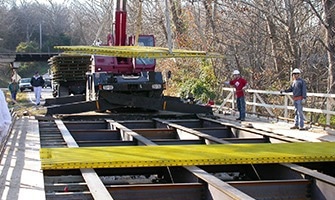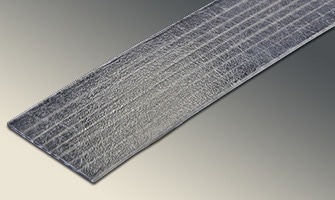Structural reinforcements are vital for improving the overall strength and lifetime of concrete-based structural applications, including bridge decks, parking garages, and drainage systems.
Reinforcements are essential for retrofitting existing structures and are more economical than completely rebuilding them, especially in terms of increasing the load-bearing capacity of the original structure. The structural industry conventionally used steel to fabricate structural reinforcements.
This article highlights the drawbacks of steel-based reinforcements and why fiberglass can be considered the optimal structural reinforcement material today.
Steel Rebars
Steel rebars, which are reinforcement bars, are conventional structural reinforcements generally used for reinforcing cement concrete. Under compressive loads, concrete is strong, but it can be weak under tensile loads.
Steel rebars keep the concrete together and improve the tensile strength of concrete-based structures while avoiding cracks in structural components throughout tensile loading. Steel was primarily used in rebars because it has a similar thermal expansion to concrete.
Unfortunately, steels are extremely reactive. Steel slowly starts to corrode as concrete comes into contact with oxygen, chlorides, and moisture.
Corrosion erodes steel and makes the strength of structural reinforcements vulnerable, making them prone to failure. Over time, rust builds up on steel bars, and pressure accumulates on the surrounding concrete, resulting in cracks that can ultimately fracture concrete via spalling.
These failures can lead to expensive repairs and costly maintenance. Furthermore, steel rebars are prone to melting at enhanced temperatures, are overly heavy, and are expensive to install.
Fiberglass - The Future of Structural Reinforcements
Fiberglass, aka fiberglass reinforced polymers (FRP), is a composite material comprised of a polymer resin matrix reinforced by embedded glass fibers. They are simple to manufacture and are made via pultrusion.
Fiberglass can overcome the main shortcomings of steel rebars and is undoubtedly the go-to modern material for structural reinforcements. Fiberglass fabrics are lightweight with high flexural strength, strength-to-weight ratio, and stiffness. Fiberglass is approximately 75-80% lighter than steel yet is stronger and demands less installation time and labor.
Therefore, less weight is added to the reinforced structures, improving their overall performance. Fiberglass can be transformed into complex shapes easily, delivering greater flexibility for custom applications.
Contrary to steels, fiberglass has exceptional chemical resistance, especially where corrosion is concerned. The interlaced structure of fiberglass makes structural reinforcements watertight and impervious to other corrosive and alkaline environments. Minimal maintenance is required for fiberglass reinforcements, and they also have low lifecycle costs. Fiberglass is electrically non-conductive and therefore makes sure personnel remain safe.
Fiberglass Reinforcements from Strongwell
With more than 65 years of experience, Strongwell is a “gold standard” in delivering an extensive range of dynamic structural engineering solutions. Strongwell offers the following cost-effective, sophisticated fiberglass structural reinforcements:
GRIDFORM™
Prefabricated fiberglass structural reinforcement with double-layer grating and an integral stay-in-place form. It was developed to replace steel rebars for reinforcing concrete vehicular bridge decks.
Its novel double-layered structure produces a bidirectional, lightweight panel for grid construction. GRIDFORM™ is extremely lightweight, weighing only 4.7 pounds per square foot. It can be easily attached to the bridge girders and facilitates hassle-free concrete filling and forming.
Due to its exceptional corrosion resistance, GRIDFORM™ structural reinforcements have a longer lifetime than steel rebars.

Image Credit: Strongwell
SAFSTRIP®
An economic composite strengthening strip comprised of carbon tows wedged between layers of rovings and fiberglass mats. It considerably enhances the flexural and load-bearing capacity of the tensile face of structures such as concrete decks, girders, and slabs.
SAFSTRIP® structural reinforcements are easy to install using mechanical fastening to prevailing structural members with minimum surface preparation. The strips enable drilling without delaminating or splitting.

Image Credit: Strongwell
SAFSTRIP® Carbon
A unidirectional fiberglass-based structural reinforcement made of high tensile strength and high modulus carbon fibers enclosed in a thermoset resin. It is designed exclusively to be used as external reinforcement for the structural strengthening of concrete, masonry, and timber structures.
Its primary applications include fixing damaged structural parts, seismic and structural strengthening, and design or construction defects. Owing to its thin profile, it has a low impact on aesthetics.
Contact Stongwell today to find a suitable product for any project from its extensive range of structural reinforcements solutions.

This information has been sourced, reviewed and adapted from materials provided by Strongwell Corporation.
For more information on this source, please visit Strongwell Corporation.